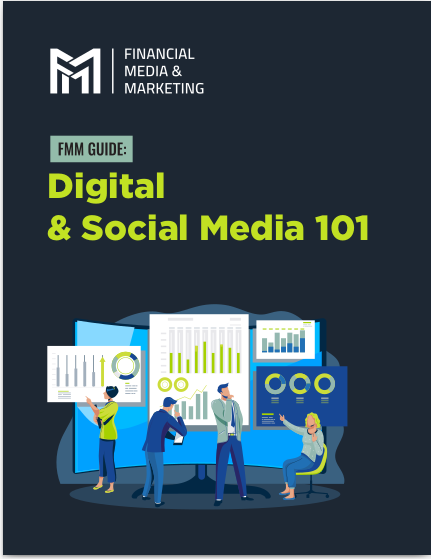Key Takeaways
-
Your personal brand communicates a message whether you’re actively shaping it or not—intentional branding ensures the message aligns with your professional goals.
-
A clear, consistent personal brand fosters trust, credibility, and influence, all of which are vital in today’s competitive landscape.
Why Your Personal Brand Matters More Than Ever in 2025
In 2025, your personal brand is no longer just a “nice to have”—it’s an essential part of your professional identity. With digital visibility shaping perception, professionals across industries are now judged by more than resumes and credentials. Your personal brand is what people say about you when you’re not in the room, and it influences opportunities long before any conversation takes place.
From hiring decisions to client trust, your personal brand can open or close doors. Whether you’re leading a team, transitioning careers, or building authority, the right brand message accelerates your goals.
Understanding What Your Brand Is Saying
Even if you haven’t intentionally built a brand, one already exists. It’s formed by how you present yourself:
-
Your online profiles and activity
-
The tone and language in your communication
-
Visual elements such as headshots and colors
-
Public achievements and recognitions
-
How others describe and recommend you
These elements combine into a narrative. If this narrative lacks clarity or consistency, it can confuse, mislead, or worse—turn potential collaborators away.
Your task isn’t just to build a brand, but to ensure it tells the story you want people to hear.
Elements of an Intentional Personal Brand
Crafting your personal brand doesn’t mean constructing a fake persona. It means aligning how you show up with your values, skills, and career aspirations. Key components include:
1. Clarity of Purpose
Your brand should reflect what you stand for and where you’re going. Define:
-
What you do and why you do it
-
Who you serve and how you help them
-
Your mission or unique value proposition
2. Visual Consistency
Everything visual about your brand should feel cohesive:
-
Profile photos across platforms
-
Color schemes and fonts (especially for creatives)
-
Slide decks, resumes, and portfolio materials
These details may seem minor, but consistency strengthens recognition and professionalism.
3. Tone and Messaging
Your language—both written and spoken—communicates your attitude and personality. Are you approachable? Authoritative? Collaborative? The tone must match your target audience and reflect who you are.
4. Thought Leadership
In 2025, showing your expertise is more valuable than simply telling. Publish insightful content, speak at events, and share relevant commentary to build credibility. This positions you as a trusted voice in your space.
5. Digital Footprint
Most people will search your name before working with you. Make sure they find:
-
A professional, updated LinkedIn profile
-
Search results that reflect your current role or expertise
-
No conflicting or outdated information
Audit Your Current Personal Brand
To shape the message you want your brand to send, start by understanding what it’s currently saying.
Ask yourself:
-
What shows up when you Google your name?
-
Does your LinkedIn match your current role and goals?
-
Do your social posts support your professional image?
-
Are your bios updated and consistent?
Consider doing a brand audit every six months. This ensures your public presence evolves with your career. In 2025’s fast-paced market, outdated information can mean missed opportunities.
Common Branding Mistakes Professionals Still Make
Even in the current landscape, many professionals unintentionally sabotage their personal brand. Here are key missteps to avoid:
Lack of Alignment
A mismatch between your brand and your current career goals confuses your audience. For example, if you want to be seen as a strategic leader, but your content focuses on tactical how-tos, your audience may not perceive you as senior-level.
Infrequent Visibility
A polished profile won’t help much if no one sees it. Staying silent online makes it harder for people to associate your name with your area of expertise.
Inconsistent Messaging
Using drastically different bios across platforms weakens credibility. Stick to one core message and adapt it only slightly for tone.
Outdated Assets
An old profile photo or obsolete job title sends the message that you’re disengaged or inattentive to detail.
Oversharing or Undersharing
There’s a fine line between being authentic and being unfiltered. Keep your content professional but human. Share your insights, wins, and challenges with discretion.
Building a Brand That Attracts Opportunities
A well-crafted brand pulls the right people toward you. Whether it’s recruiters, partners, or clients, they’re more likely to trust and approach you if your message is clear, relevant, and compelling.
Here’s how to attract rather than chase:
Position Yourself Strategically
Know your niche. Tailor your messaging and presence to resonate with the specific people you want to engage. This increases your relevance and perceived authority.
Show Social Proof
Testimonials, endorsements, and media features enhance your brand’s credibility. Highlight them on your platforms—but don’t overdo it. Let others’ voices elevate yours.
Engage With Your Industry
Comment on peers’ posts, contribute to discussions, and amplify others. A brand isn’t just built by broadcasting—it’s shaped by interaction.
Stay Current
Trends change. Your brand should reflect your ongoing growth. Invest time each quarter reviewing and updating your messaging, assets, and goals.
Personal Branding for Different Career Stages
Your personal brand in your early career will differ from the one you cultivate mid-career or during a leadership transition. Here’s what to focus on at different stages:
Early Career
-
Emphasize learning, adaptability, and curiosity
-
Use your brand to explore options and network
-
Focus on building presence, not perfection
Mid-Career
-
Highlight specialization and results
-
Share case studies, success stories, and industry insight
-
Refine your messaging to match new goals
Executive or Leadership Level
-
Focus on thought leadership, influence, and vision
-
Use your brand to mentor, inspire, and drive conversations
-
Align your personal message with organizational impact
How Long Does It Take to Build a Strong Brand?
Building a personal brand is not an overnight task. It requires consistency over time. Most professionals begin to see results within 6 to 12 months if they stay intentional. Key milestones include:
-
Month 1–3: Audit, strategize, and align all digital platforms
-
Month 4–6: Start publishing content and engaging regularly
-
Month 6–9: See increased visibility, inbound inquiries, and recognition
-
Month 12+: Refine, grow audience, and seek speaking or leadership roles
You’ll never be “done” with your brand—it evolves as you do.
Don’t Let Silence Define Your Message
If you aren’t guiding the message your brand sends, people will fill in the blanks on their own. Silence leaves room for assumptions. By being intentional, you give people the right language to describe you and the right reasons to trust you.
Take ownership of your narrative. Regularly reflect on your direction. Adjust the voice, imagery, and positioning of your brand as your career shifts.
The professionals who stand out in 2025 aren’t always the most experienced—they’re often the most consistent and clear.
It’s Time to Shape the Message You Want to Send
Your personal brand already speaks on your behalf—so you might as well take the mic. Whether you’re aiming for growth, credibility, or legacy, the brand you build today influences what tomorrow looks like.
Be intentional. Be strategic. And most of all, be authentic.










